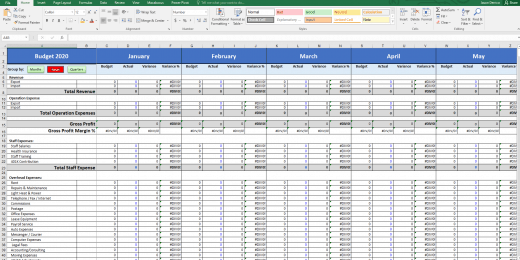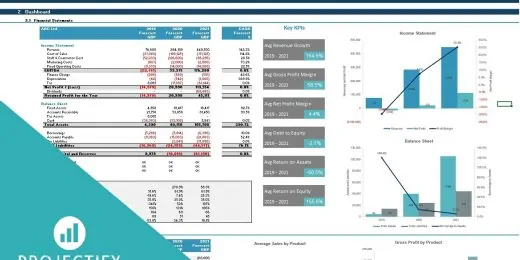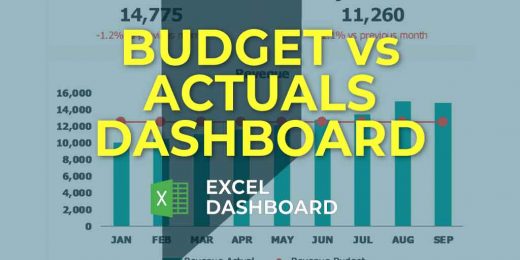Explore Best Practices With Balance Sheet Free Template

Looking to explore best practices with a balance sheet free template? Learn about effective strategies and key components for optimizing your balance sheet with our comprehensive guide.
Understanding the balance sheet is essential for financial management and decision-making, and utilizing a free template can streamline the process. By following best practices, you can ensure accuracy and efficiency in presenting your company’s financial position. We will delve into the importance of balance sheets, key elements to include, and how using a template can facilitate the process.
Additionally, we’ll provide actionable tips for creating a clear and comprehensive balance sheet that aligns with industry standards. Keep reading to enhance your financial reporting with our balance sheet free template best practices.
Why Use A Balance Sheet Template
When managing the financial aspects of a business, precision and efficiency are paramount. Utilizing a balance sheet template is a strategic approach that offers multiple benefits, enhancing the overall process of financial management. Below, we delve into the specific advantages that a balance sheet template brings to the table.
Saves Time And Effort
In the realm of finance, the adage “time is money” holds particularly true. A balance sheet template serves as a tool that significantly reduces the time and effort required to organize financial information. This efficiency is achieved through the template’s ability to streamline the process, eliminating the need for extensive manual data entry. By simplifying the way financial data is compiled, businesses can allocate their resources more effectively, focusing on analysis and decision-making rather than data entry.
Ensures Accuracy And Consistency
Accuracy and consistency are the cornerstones of reliable financial reporting. The use of a balance sheet template minimizes the risk of errors and inconsistencies that are all too common in manual document creation. These errors can not only mislead financial analysis and decision-making but also pose compliance risks in terms of financial reporting standards. A template ensures that each balance sheet is prepared with the same attention to detail and adherence to accounting principles, enhancing the reliability of the financial information presented.
Provides A Standardized Format
A standardized format is crucial for the readability and comparability of financial documents. Balance sheet templates offer a uniform structure that guarantees each document adheres to a consistent reporting style. This standardization is particularly beneficial when financial statements need to be reviewed by external stakeholders, such as investors, creditors, or regulatory bodies. It ensures that all relevant information is presented in an expected format, making it easier to understand and compare across different periods or entities.
In summary, adopting a balance sheet template in financial management practices offers significant advantages in terms of time savings, accuracy, consistency, and standardization. These benefits not only streamline the process of preparing balance sheets but also enhance the quality of financial reporting, contributing to more informed decision-making and better financial health for businesses.
Understanding The Balance Sheet
Gain insights into understanding and implementing best practices for a balanced sheet with a free template. This resource provides a clear understanding of the balance sheet, equipping you with the knowledge and tools needed for effective financial management.
A balance sheet stands as a cornerstone document within the financial reporting realm, offering a comprehensive overview of a company’s financial health at a specific moment in time. By meticulously listing a company’s assets, liabilities, and equity, it paints a vivid picture of its financial stance, enabling stakeholders to gauge its stability, operational efficiency, and growth potential.
Definition and Purpose
The essence of a balance sheet is to provide a detailed snapshot of a company’s financial position at a particular juncture. This snapshot encompasses all assets, liabilities, and the equity held by the company at the time of reporting. Assets refer to the tangible and intangible resources owned by the company, essential for its operations and growth. Liabilities denote the financial obligations or debts owed to external parties, reflecting the company’s financial commitments. Equity, on the other hand, represents the company’s net worth, derived from subtracting liabilities from assets. This intricate balance between what a company owns and owes offers invaluable insights into its financial health and operational viability.
Components of a Balance Sheet
A balance sheet is structured around three fundamental components:
- Assets: These are the tangible and intangible resources that a company owns. Assets are further divided into current assets, such as cash and inventory, which can be converted into cash within a year, and non-current assets, like property and equipment, which are more long-term in nature.
- Liabilities: Liabilities represent the debts or financial obligations a company owes to outside parties. These are categorized into current liabilities, payable within a year, and long-term liabilities, which are due for payment beyond a year.
- Equity: Equity, also known as shareholders’ equity, is the residual interest in the assets of the company after deducting liabilities. It includes capital contributed by the owners and retained earnings accumulated over time.
Importance in Financial Analysis
The balance sheet is pivotal in financial analysis for several reasons:
- It serves as a key tool for investors, creditors, and other stakeholders to assess the financial health and stability of a company. By examining the balance between assets and liabilities, stakeholders can gauge the company’s ability to meet its financial obligations, sustain operations, and pursue growth opportunities.
- The balance sheet aids in evaluating the liquidity and solvency of a company. Liquidity refers to the ability to meet short-term obligations using current assets, whereas solvency focuses on the company’s capability to meet long-term debts. A healthy balance sheet typically indicates a solvent and liquid company, which is less risky for investors and creditors.
- It is critical for making informed financial decisions. Business leaders use the balance sheet to inform strategic decisions, such as investing in new projects, taking on debt, or allocating resources efficiently. Similarly, investors rely on the balance sheet to make investment choices, determining the attractiveness of a company as an investment option.
In essence, the balance sheet is not just a financial statement but a lens through which the financial stability, operational efficiency, and growth prospects of a company are scrutinized and assessed. Its role in financial analysis cannot be overstated, as it provides a foundation upon which informed and strategic financial decisions are made.
Choosing The Right Balance Sheet Template
When it comes to managing your finances, having a well-organized balance sheet is vital. It allows you to track your assets, liabilities, and equity, providing valuable insights into your financial standing. Choosing the right balance sheet template is essential to ensure accuracy and efficiency in your financial management process. Let’s explore some key factors to consider when selecting a balance sheet template that best suits your specific needs.
Consider Your Specific Needs
Before diving into the sea of balance sheet templates, take a moment to identify your specific requirements. Consider the nature of your business, the level of complexity you require, and any unique aspects of your financial situation. This will help you narrow down your options and find a template that aligns with your specific needs. Whether you’re a small business owner or an individual looking to manage personal finances, tailoring the template to your needs is crucial.
Evaluate Template Customizability
Flexibility is key when it comes to choosing a balance sheet template. Look for a template that allows for easy customization to match your branding and reporting preferences. Being able to modify the layout, headers, and formatting to suit your specific requirements will save you time and effort. Additionally, a customizable template allows you to easily incorporate any additional financial metrics or calculations that are important to your unique situation.
Look For User-friendly Features
Opting for a balance sheet template that is user-friendly can make a significant difference in your financial management process. Look for features such as clear instructions, tooltips, and predefined formulas that streamline data entry and calculations. A template with user-friendly features will help ensure accuracy and minimize errors, making your financial reporting tasks much smoother.
Key Sections And Elements Of A Balance Sheet Template
A well-structured balance sheet is essential for gaining insights into a company’s financial position. Understanding the key sections and elements of a balance sheet template is crucial for effective financial management and decision-making. Let’s explore the essential components of a balance sheet template.
Assets
A balance sheet template typically includes a section dedicated to assets, which represents what a company owns. Current assets, such as cash, accounts receivable, and inventory, can be quickly converted into cash. Fixed assets encompass long-term investments, property, plant, and equipment, which are essential for business operations.
Liabilities
The liabilities section of a balance sheet template outlines the company’s debts and obligations. Current liabilities encompass short-term obligations like accounts payable and current portions of long-term debt. Long-term liabilities represent obligations extending beyond one year, such as long-term loans and bonds.
Shareholder’s Equity
This section of the balance sheet template highlights the company’s net worth belonging to its shareholders. It consists of common stock, additional paid-in capital, retained earnings, and treasury stock.
Financial Ratios And Analysis
Effective balance sheet templates often include calculations for important financial ratios, such as the debt-to-equity ratio, current ratio, and return on assets, providing valuable insights into the financial health and performance of the company.
Customizing Your Balance Sheet Template
When customizing your balance sheet template, it’s important to tailor it to your specific business needs and requirements. By making adjustments to the categories, formatting, layout, and additional information included, you can ensure that your balance sheet effectively communicates the financial position of your company.
Adding/removing Categories
Customizing the balance sheet template involves the flexibility to add or remove categories to align with your business’s financial structure. Determine the essential categories that accurately reflect your company’s assets, liabilities, and equity. Consider the granularity required to provide a comprehensive overview of your financial standing.
Modifying Formatting And Layout
Enabling the modification of formatting and layout allows the balance sheet to be presented in a clear and organized manner. Streamline the presentation by adjusting font sizes, colors, and styles to enhance readability and visual appeal. Ensure that the layout conveys a logical flow of information from assets to liabilities and equity.
Including Additional Information
Expanding the balance sheet template to include additional information such as notes, explanations, or comparative data can provide valuable context for the financial figures presented. Consider including percentage changes, historical data, or explanatory notes to enrich the understanding of the financial position.
Tips For Using A Balance Sheet Template Effectively
Using a balance sheet template effectively is key to understanding your financial standing and making informed decisions. Whether you are managing your personal finances or running a business, a well-maintained balance sheet provides a snapshot of your assets, liabilities, and equity. To help you make the most of this valuable tool, here are some tips for using a balance sheet template effectively.
Regularly Update Your Balance Sheet
Keeping your balance sheet up-to-date is crucial for accurate financial analysis. Set a schedule to review and update your balance sheet regularly to ensure that it reflects the most current information. By doing so, you can track changes in your financial position, identify trends, and make necessary adjustments to your financial strategy.
Review For Errors And Inconsistencies
When utilizing a balance sheet template, it’s important to review your entries for errors and inconsistencies. Even minor mistakes can have a significant impact on the accuracy of your financial picture, potentially leading to faulty insights and misguided decisions. Take the time to double-check your numbers and cross-reference them with supporting documents to ensure that your balance sheet is error-free.
Utilize Built-in Formulas And Functions
The great advantage of using a balance sheet template is the presence of built-in formulas and functions that automatically calculate key financial metrics. Take advantage of these features to save time and minimize the risk of manual errors. Familiarize yourself with how these formulas work and customize them to reflect your specific financial context. This will help you gain quick insights into key financial ratios, such as current ratio and debt-to-equity ratio, without the need for complex calculations.
Common Challenges And Solutions
Data management and processing in businesses involve numerous challenges, from maintaining accuracy in data entry to ensuring compatibility across various software tools. Tackling these issues efficiently is crucial for operational success and integrity. Below, we delve into strategies for overcoming common hurdles in data management, focusing on data entry errors, handling complex financial structures, and dealing with template compatibility issues.
Overcoming Data Entry Errors
Data entry errors are a prevalent issue in many industries, often leading to significant time and financial losses. Combatting these inaccuracies can be effectively achieved through the implementation of automated checks and the practice of double entries. Automated checks involve using software tools to validate inputs against predefined rules or patterns, thereby identifying errors as data is entered. For instance, validation can ensure that phone numbers contain the correct number of digits or that email addresses have a valid format. On the other hand, double entries require two individuals to enter the same data independently. This method is particularly useful in financial contexts, where accuracy is paramount. Discrepancies between the two entries can then be investigated and resolved, significantly reducing the risk of errors slipping through the cracks. By combining automated checks with double-entry systems, organizations can significantly enhance the accuracy and reliability of their data.
Handling Complex Financial Structures
Complex financial structures, such as those involving intricate investment vehicles or multi-layered company entities, can pose significant challenges in terms of data management and reporting. The key to effectively managing this complexity lies in breaking down the structures into simpler, more manageable components. This approach involves dissecting the overarching structure into its fundamental elements, which can then be analyzed and reported on individually. By doing so, financial analysts and accountants can gain a clearer understanding of each component’s impact on the whole, facilitating more accurate financial analysis and decision-making. Additionally, this breakdown makes it easier to identify and address potential issues within specific components, enhancing the overall management of financial structures.
Dealing with Template Compatibility Issues
In an era where data is frequently shared and processed across different platforms and software, template compatibility issues can arise, leading to inefficiencies and potential data loss. To ensure seamless integration and prevent such problems, organizations should prioritize using standardized formats for data templates. Common formats such as CSV, XLSX, or XML are widely supported and can significantly reduce compatibility issues.
Moreover, it is crucial to regularly update templates to align with the latest software versions and industry standards. Keeping templates up-to-date ensures that they remain compatible with the tools and systems used by the organization and its partners, facilitating smoother data exchange and processing. Additionally, investing in software that can automatically convert data into various formats can further enhance compatibility and reduce manual conversion efforts.
In conclusion, effectively addressing data entry errors, complex financial structures, and template compatibility issues requires a combination of strategic approaches and technological solutions. By implementing these strategies, organizations can enhance the accuracy, clarity, and efficiency of their data management processes, ultimately supporting better decision-making and operational success.
Best Practices For Balance Sheet Analysis
Analyzing a balance sheet is an essential skill for investors, business owners, and finance professionals, offering insights into a company’s financial condition at a specific point in time. The balance sheet, part of the trio of critical financial statements, details assets, liabilities, and shareholders’ equity, providing a snapshot of what the company owns and owes, as well as the amount invested by shareholders. To maximize the effectiveness of balance sheet analysis, adhering to certain best practices can significantly enhance the insights gained. This exploration outlines key strategies for conducting thorough balance sheet analyses, including comparing with previous periods, benchmarking against industry standards, and using ratios and metrics for deeper insights.
Compare With Previous Periods
Comparing current balance sheets with those from previous periods is a fundamental step in analyzing a company’s financial evolution over time. This practice helps identify trends in assets, liabilities, and equity, offering clues about the company’s growth trajectory, liquidity, and financial stability. For example, a consistent increase in assets relative to liabilities may indicate improving financial health. Conversely, growing liabilities or decreasing assets might signal potential trouble spots. This temporal comparison allows analysts to spot patterns of improvement or decline, providing a basis for forecasting future performance.
Benchmark Against Industry Standards
Benchmarking a company’s financial performance against industry standards is another critical best practice in balance sheet analysis. Industry standards serve as a comparative yardstick, highlighting how a company stacks up against its peers in terms of financial health and operational efficiency. By evaluating key metrics such as debt levels, asset management, and profitability ratios in the context of industry norms, analysts can determine whether a company is leading, on par, or lagging behind its competitors. This contextual analysis is invaluable for identifying competitive advantages or uncovering areas requiring improvement.
Use Ratios and Metrics for Insights
Employing financial ratios and metrics is arguably one of the most insightful practices in balance sheet analysis. Ratios such as the current ratio, debt-to-equity ratio, and return on equity (ROE) translate balance sheet data into actionable insights, simplifying the assessment of a company’s liquidity, leverage, and profitability. For instance, a high current ratio may suggest strong liquidity, while a high debt-to-equity ratio could indicate excessive reliance on debt financing. Utilizing these ratios enables analysts to dissect the financial nuances of a company, providing a clearer picture of its financial health and operational performance.
In conclusion, effective balance sheet analysis hinges on the strategic application of these best practices. By comparing financial data across periods, benchmarking against industry standards, and leveraging ratios for deeper insights, analysts can uncover valuable information about a company’s financial condition, trends, and performance relative to its peers. These practices not only enhance the understanding of a company’s current financial status but also contribute to more informed decision-making for investors, managers, and other stakeholders.
Frequently Asked Questions
What Are The Key Components Of A Balance Sheet Template?
A balance sheet template includes assets, liabilities, and equity sections. It offers a snapshot of a company’s financial position at a specific time, helping to analyze its liquidity and solvency.
How Can A Balance Sheet Template Benefit Small Businesses?
A balance sheet template can assist small businesses in assessing their financial health, making informed decisions, securing loans, and attracting potential investors.
Why Is It Important To Regularly Update A Balance Sheet Template?
Regular updates to a balance sheet template ensure accurate financial reporting, aid in identifying trends and issues, and support strategic planning for future growth.
Conclusion
Utilizing a balance sheet free template can be a game-changer for businesses of all sizes. By implementing best practices when crafting your balance sheet, you can gain valuable insights into your financial health, identify areas for improvement, and make informed decisions to drive growth.
With its user-friendly format and customizable features, this template offers a convenient and efficient way to organize your financial data. Take advantage of this valuable resource to optimize your financial management and propel your business forward.



















































